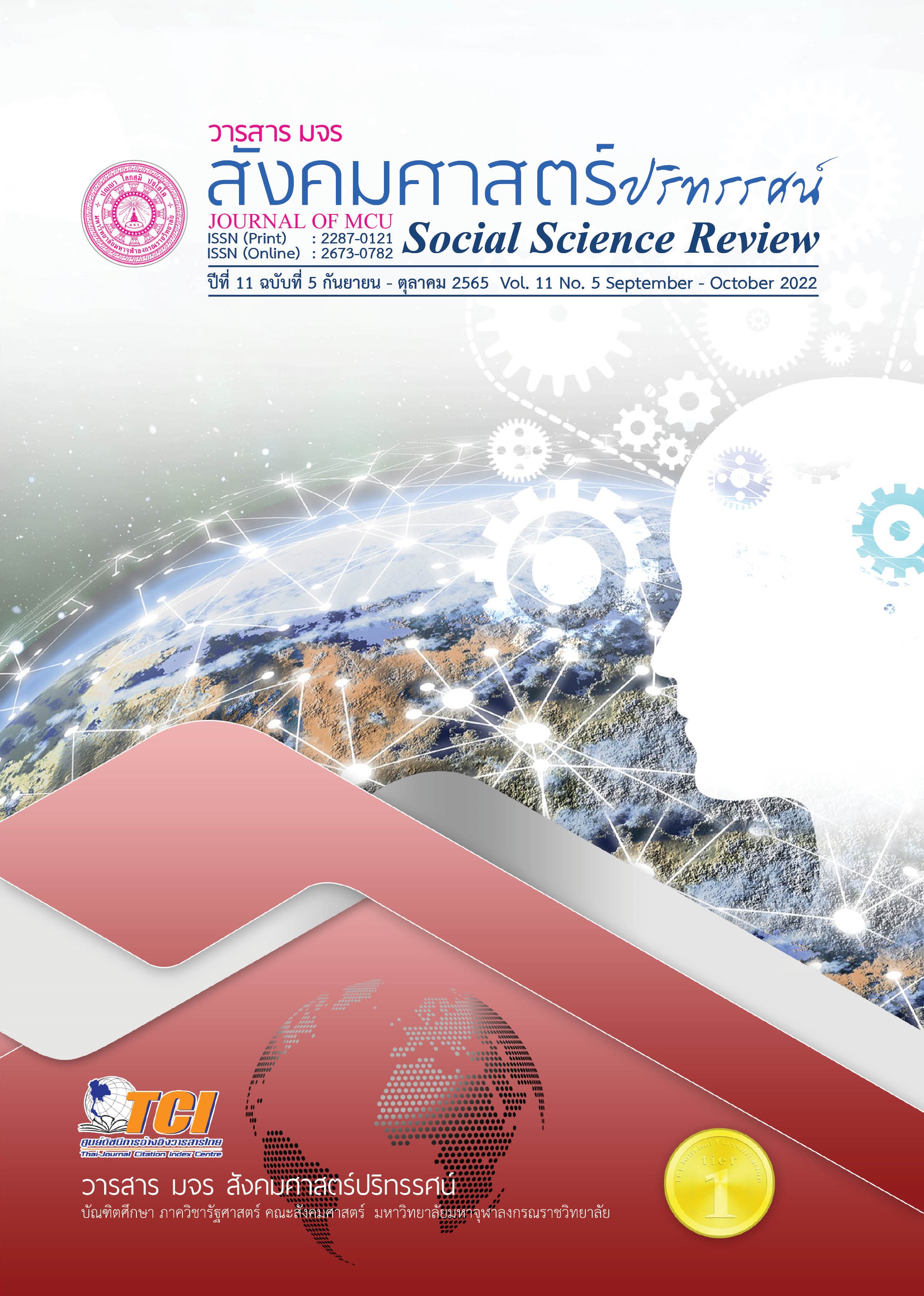ผลการเปรียบเทียบระดับความสามารถในการผลิตวิดีโอการสอน ด้วยตนเองของนิสิตครู
คำสำคัญ:
ความสามารถในการผลิตวิดีโอการสอนด้วยตนเอง, วิดีโอการสอน, นิสิตครูบทคัดย่อ
การวิจัยครั้งนี้มีวัตถุประสงค์เพื่อ (1) สำรวจรระดับความสามารถในการผลิตวิดีโอการสอนด้วยตนเองของนิสิตครู (2) เปรียบเทียบระดับความสามารถในการผลิตวิดีโอการสอนด้วยตนเองของนิสิตครูที่มีภูมิหลังแตกต่างกัน รูปแบบการวิจัยเชิงสำรวจ ตัวอย่างที่ใช้ในการวิจัย คือ นิสิตครูระดับปริญญาตรี มหาวิทยาลัยพะเยา จำนวน 718 คน เก็บรวบรวมข้อมูลด้วยแบบสอบถามระดับความสามารถในการผลิตวิดีโอการสอนด้วยตนเอง วิเคราะห์ข้อมูลด้วยสถิติเชิงบรรยาย ได้แก่ ความถี่ ร้อยละ ค่าเฉลี่ย และส่วนเบี่ยงเบนมาตรฐาน วิเคราะห์ความแตกต่างของระดับความสามารถในการผลิตวิดีโอการสอนด้วยตนเอง ด้วยการทดสอบค่าที และวิเคราะห์ความแปรปรวนพหุนาม
ผลการวิจัยพบว่า (1) นิสิตครูมีความสามารถในการออกแบบวิดีโอการสอนมากที่สุด (M=3.524, SD=.621) รองลงมาคือ ความสามารถในการพัฒนา (M=3.496, SD=.708) และ ความสามารถในการจัดส่งวิดีโอ (M= 3.464, SD=.744) (2) นิสิตครูที่มีภูมิหลังต่างกันมีระดับความสามารถในการผลิตวิดีโอการสอนด้วยตนเองต่างกัน โดยนิสิตเพศชายและเพศหญิง มีระดับความสามารถในการผลิตวิดีโอการสอนด้วยตนเองต่างกันในองค์ประกอบที่ 3 ความสามารถในการจัดส่งวิดีโอ นิสิตเพศชายและเพศหญิงในกลุ่มสาขาวิชามนุษยศาสตร์ และกลุ่มสาขาวิชาวิทยาศาสตร์ ที่ศึกษาต่างชั้นปี นิสิตครูที่มีประสบการณ์การใช้เครื่องมือในการตัดต่อวิดีโอ มีระดับความสามารถในการผลิตวิดีโอการสอนด้วยตนเองแตกต่างกัน
เอกสารอ้างอิง
กณิชชา ศิริศักดิ์ และ ดวงกมล ไตรวิจิตรกุณ. (2563). การวิเคราะห์องค์ประกอบสมรรถนะดิจิทัลสำหรับครู. วารสารอิเล็กทรอนิกส์ทางการศึกษา (OJED). 15 (2), 1-11
สมเกียรติ สรรคพงษ์. (2562). รูปแบบการส่งเสริมการใช้สื่ออิเล็กทรอนิกส์เพื่อยกระดับคุณภาพการศึกษาในโรงเรียนประชารัฐ สังกัดสำนักงานคณะกรรมการศึกษาขั้นพื้นฐาน. สืบค้น 1 กันยายน 2564, จาก https://www.obec.go.th/archives/1438
เสกสรร สายสีสด และคณะ. (2563). การศึกษาพฤติกรรมการใช้และความพึงพอใจในการใช้แอปพลิเคชัน TikTok ของนักเรียนนักศึกษาในเขตเทศบาลนครอุดรธานี. วารสารวิทยาการจัดการ มหาวิทยาลัยราชภัฏพิบูลสงคราม, 2(3), 11-26.
วิทยาลัยการศึกษา. (2564). หลักสูตรการศึกษาบัณฑิต สาขาวิชาการศึกษา หลักสูตรปรับปรุง พ.ศ. 2563. พะเยา: มหาวิทยาลัยพะเยา.
Bevan, M. (2020). Why Videos are Important in Education. Retrieved September 1, 2021, from https://www.nextthoughtstudios.com/video-production-blog/2017/1/31/why-videos-are-important-in-education
Brame, C. J. (2016). Effective educational videos: Principles and guidelines for maximizing student learning from video content. CBE—Life Sciences Education, 15(4), es6.
Campbell, L. O. et al. (2020). Student-created video: An active learning approach in online environments. Interactive Learning Environments, 1-10.
Chtouki, Y. et al. (2012). The impact of YouTube videos on the student's learning. Paper presented at the 2012 international conference on information technology based higher education and training (ITHET).
Cohen, J. (2013). Statistical power analysis for the behavioral sciences: Academic press.
Dabbagh, N., & Bannan-Ritland, B. (2005). Online learning: Concepts, strategies, and application: Prentice Hall.
Delen, E.et al. (2014). Effects of interactivity and instructional scaffolding on learning: Self-regulation in online video-based environments. Computers & Education, 78, 312-320.
Girod, M., et al. (2007). Using digital video to re-think teaching practices. Journal of Computing in Teacher Education, 24(1), 23-29.
Hart, A., & Hicks, A. (2002). Teaching media in the English curriculum: Stylus Publishing, LLC.
Hobbs, R., & Frost, R. (1998). Instructional practices in media literacy education and their impact on students’ learning. Atlantic Journal of Communication, 6(2), 123-148.
Jelsbak, V. A. et al. (2017). The Students’ Experiences with Live Video-Streamed Teaching Classes.Paper presented at the European Conference on eLearning.
Kirwan, T. et al. (2003). Mapping media literacy. London, England: British Film Institute, BSC, ITC.
Miller, S. M. (2007). English teacher learning for new times: Digital video composing as multimodal literacy practice. English Education, 40(1), 61-83.
Niess, M. L. (2011). Investigating TPACK: Knowledge growth in teaching with technology. Journal of Educational Computing Research, 44(3), 299-317.
Norton, P., & Hathaway, D. (2010). Video production as an instructional strategy: Content learning and teacher practice. Contemporary Issues in Technology and Teacher Education, 10(1), 145-166.
Spannaus, T. (2012). Creating video for teachers and trainers: producing professional video with amateur equipment: John Wiley & Sons.
Wilhoit, E. D. (2017). Photo and video methods in organizational and managerial communication research. Management Communication Quarterly, 31(3), 447-466.
ดาวน์โหลด
เผยแพร่แล้ว
รูปแบบการอ้างอิง
ฉบับ
ประเภทบทความ
สัญญาอนุญาต
ลิขสิทธิ์ (c) 2022 วารสาร มจร สังคมศาสตร์ปริทรรศน์

อนุญาตภายใต้เงื่อนไข Creative Commons Attribution-NonCommercial-NoDerivatives 4.0 International License.
เพื่อให้เป็นไปตามกฎหมายลิขสิทธิ์ ผู้นิพนธ์ทุกท่านต้องลงลายมือชื่อในแบบฟอร์มใบมอบลิขสิทธิ์บทความให้แก่วารสารฯ พร้อมกับบทความต้นฉบับที่ได้แก้ไขครั้งสุดท้าย นอกจากนี้ ผู้นิพนธ์ทุกท่านต้องยืนยันว่าบทความต้นฉบับที่ส่งมาตีพิมพ์นั้น ได้ส่งมาตีพิมพ์เฉพาะในวารสาร มจร สังคมศาสตร์ปริทรรศน์ เพียงแห่งเดียวเท่านั้น หากมีการใช้ภาพหรือตารางหรือเนื้อหาอื่นๆ ของผู้นิพนธ์อื่นที่ปรากฏในสิ่งตีพิมพ์อื่นมาแล้ว ผู้นิพนธ์ต้องขออนุญาตเจ้าของลิขสิทธิ์ก่อน พร้อมทั้งแสดงหนังสือที่ได้รับการยินยอมต่อบรรณาธิการ ก่อนที่บทความจะได้รับการตีพิมพ์ หากไม่เป็นไปตามข้อกำหนดเบื้องต้น ทางวารสารจะถอดบทความของท่านออกโดยไม่มีข้อยกเว้นใดๆ ทั้งสิ้น





